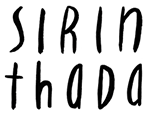I got to celebrate Songkran with my family over the weekend—the Thai New Year and water festival, where we symbolically wash away misfortunes, pray for prosperity for the coming year, and honor family and community. Wat Tummapratiep DC has an AMAZING 2-day festival, open to the public—so many dishes and desserts that you can usually only find in Thailand (some Laotian and Vietnamese foods too!). It’s a foodie’s dream, a great way to support local businesses, and truly a hidden gem if you’re visiting the DC area in April.
It’s also a chance for many of us to dress in traditional Thai formal wear, which showcases some of the most incredible textile work. The intricate designs you see on traditional Thai skirts are not printed, but actually woven.
And finally, a wonderful primer on some of the different types of Thai royal traditional dress:











